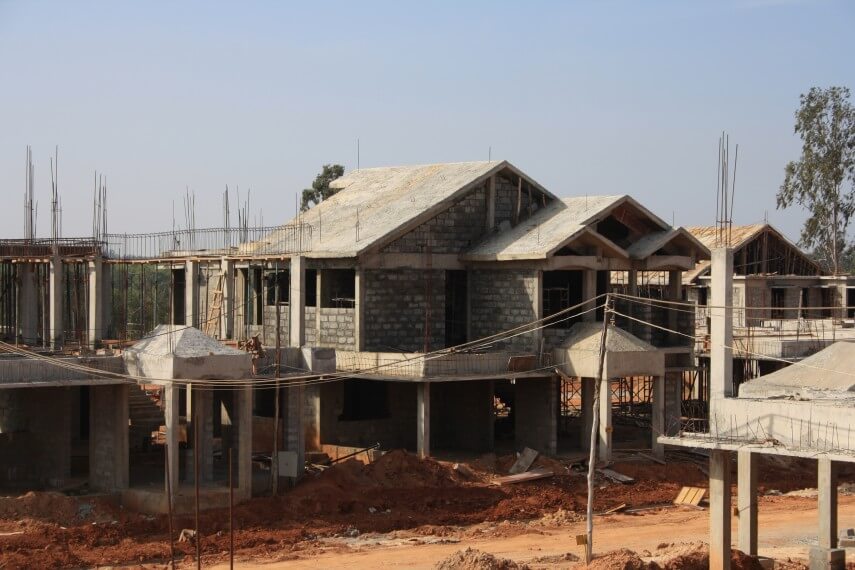
When it comes to creating a dream home, homeowners often find themselves at the crossroads of aesthetics and functionality. They yearn for a space that is not only visually pleasing but also practical and efficient for everyday living. Striking the right balance between these two aspects can be quite the challenge, but that's where residential design-build contractors step in.
In this post, we will delve into the significance of interior design in residential projects and explore how design-build contractors collaborate with interior designers to achieve the perfect blend of aesthetics and functionality in homes.
The Crucial Role of Interior Design
Interior design plays a pivotal role in shaping the ambiance, character, and functionality of a living space. It's not just about selecting colors and furniture; it encompasses a broad spectrum of considerations. Here are some of the aspects that highlight its importance in residential projects:
1. Personalization: Every homeowner has a unique vision for their living space. Interior design allows them to personalize their home, making it a reflection of their tastes, lifestyle, and values. This personal touch creates a sense of belonging and comfort.
2. Maximizing Space: residential design services providers are skilled in optimizing the use of space, whether you live in a cozy apartment or a spacious suburban house. They can reconfigure layouts and select furnishings that make the most of the available space.
3. Functionality: Beyond aesthetics, interior design focuses on creating a functional and efficient living environment. Proper planning ensures that every room and piece of furniture serves a purpose, making daily life more convenient.
4. Cohesive Design: residential design-build contractors excel in creating a cohesive look throughout the home. They select elements that harmonize with each other, from color schemes and materials to textures and lighting, ensuring a unified and pleasing atmosphere.
5. Emotional Well-Being: A well-designed home can significantly impact the emotional well-being of its inhabitants. Thoughtful design choices can reduce stress, enhance comfort, and promote relaxation.
The Synergy of Design-Build Contractors and Interior Designers
The collaboration between residential design-build contractors and interior designers is a harmonious dance that can bring out the best in residential projects. Design-build contractors are responsible for overseeing the entire construction process, from concept to completion, and interior designers work on the aesthetic and functional aspects of the interior spaces.
Here's how these professionals work together:
1. Early Collaboration: The most successful projects start with early collaboration between the design-build contractor and the interior designer. They work together from the project's inception to ensure that the architectural design and interior design are aligned.
2. Shared Vision: Design-build contractors and interior designers share a common vision for the project. They discuss the client's objectives, preferences, and lifestyle to create a design that seamlessly blends aesthetics and functionality.
3. Seamless Communication: Effective communication between these two parties is key. Regular meetings, brainstorming sessions, and project updates ensure that everyone is on the same page and can make necessary adjustments as the project progresses.
4. Budget Management: Collaborative efforts allow for better budget management. The interior designer can select materials and finishes that not only meet aesthetic goals but also align with the project's budgetary constraints.
5. Streamlined Workflow: When the design-build contractor and interior designer work closely, the project can progress more smoothly. There's less risk of design changes causing delays or complications during construction.
6. Problem-Solving: Should unexpected challenges arise during construction, the collaboration between these professionals enables creative problem-solving. They can adapt the design to address issues while maintaining the project's integrity.
7. Quality Assurance: Together, design-build contractors and interior designers ensure that the project meets the highest standards of quality. They pay attention to every detail, from structural integrity to finishing touches.
Wrapping Up!
The art of balancing aesthetics and functionality in residential design is a complex undertaking, but it's a challenge that residential design-build contractors embrace with enthusiasm. The significance of interior design in residential projects cannot be overstated, as it enhances the emotional well-being of homeowners, optimizes space, and creates personalized, cohesive spaces.
So, if you're embarking on a residential project, consider the power of this partnership in achieving your dream home that strikes the perfect balance between aesthetics and functionality.


























